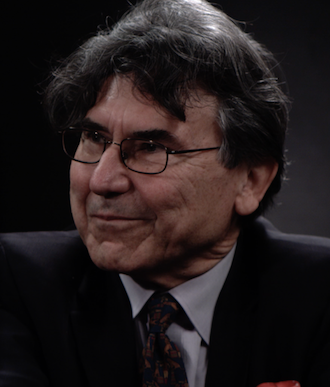 Proportion, harmony, mythological subject-matter – all well-known and indisputable effects of classical recovery on Renaissance artistic expression. But James G. Turner (James D. Hart Chair in English at UC Berkeley) in Eros Visible: Art, Sexuality, and Antiquity in Renaissance Italy underscores an easily neglected side of art and court culture during the Italian Renaissance. Uniting the erotic and the aesthetic, Turner takes a fresh look at the canonical works of masters such as Raphael and Michelangelo. These works, closely analyzed alongside a wide range of visual and textual erotica, come to characterize a “corporeal turn” in Italian art during the sixteenth-century. Turner productively relates this sensibility to two points of origin in antiquity: the Mars, Venus, and Vulcan episode and the narrated account of seeing Praxiteles’s statue of Aphrodite at Knidos. In this conversation with Luca Politi, graduate student in Italian Studies at Harvard University, Turner provides an overview of the book and discusses some of his findings.
Proportion, harmony, mythological subject-matter – all well-known and indisputable effects of classical recovery on Renaissance artistic expression. But James G. Turner (James D. Hart Chair in English at UC Berkeley) in Eros Visible: Art, Sexuality, and Antiquity in Renaissance Italy underscores an easily neglected side of art and court culture during the Italian Renaissance. Uniting the erotic and the aesthetic, Turner takes a fresh look at the canonical works of masters such as Raphael and Michelangelo. These works, closely analyzed alongside a wide range of visual and textual erotica, come to characterize a “corporeal turn” in Italian art during the sixteenth-century. Turner productively relates this sensibility to two points of origin in antiquity: the Mars, Venus, and Vulcan episode and the narrated account of seeing Praxiteles’s statue of Aphrodite at Knidos. In this conversation with Luca Politi, graduate student in Italian Studies at Harvard University, Turner provides an overview of the book and discusses some of his findings.
James G. Turner Uncovers the Erotic Dimensions of Italian Renaissance Art
Classically-inspired sensuality and the artistic achievements of the Renaissance masters
Italian Studies at Harvard
Harvard non è solo l’università più ricca del pianeta e quella in cui si forma la futura classe dirigente americana. È anche un luogo dove si immagina una società migliore e si cercano i mezzi per realizzarla. Fra questi mezzi, la cultura, e specificamente la cultura italiana, troppo spesso trascurata o tradita in patria e che invece costituisce un patrimonio straordinario, capace di indurre bellezza e innovazione. Un patrimonio da proteggere, esplorare, esportare. Per questo collaboriamo a questa rubrica -- studenti, dottorandi e docenti, americani e italiani, convinti che l'arte e il pensiero siano indispensabili per cambiare e salvare il mondo. Not only is Harvard the wealthiest university in the world, it is also an institution that molds future generations of American leaders. Not only is it a space devoted to imagining a better society, but also to forging the tools to realize it. Tools are forged from resources, and Italian culture represents an extraordinary patrimony capable of embodying beauty and inspiring innovation. It is for this reason that we collaborate on this column – graduate students, undergraduates and professors, Americans and Italians, all convinced that art and thought are powerful and indispensable means of saving the world.
 DELLO STESSO AUTORE
DELLO STESSO AUTORE
 Latest News
Latest News
 New York
New York
 Italiany
Italiany
VNY Media La Voce di New York © 2016 / 2025 — La testata fruisce dei contributi diretti editoria d.lgs. 70/2017
Main Office: 230 Park Avenue, 21floor, New York, NY 10169 | Editorial Office/Redazione: UN Secretariat Building, International Press Corps S-301, New York, NY 10017 | 112 East 71, Street Suite 1A, New York, NY 10021
VNY Media La Voce di New York © 2016 / 2025
La testata fruisce dei contributi diretti editoria d.lgs. 70/2017
Main Office: 230 Park Avenue, 21floor, New York, NY 10169 | Editorial Office/Redazione: UN Secretariat Building, International Press Corps S-301, New York, NY 10017 | 112 East 71, Street Suite 1A, New York, NY 10021











